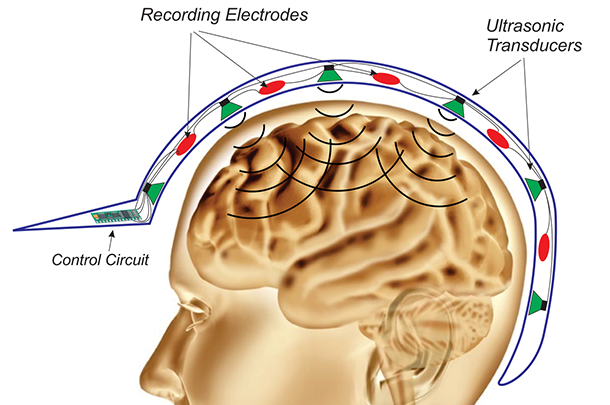Suppressing epileptic seizures
More than 50 million people of all ages suffer from epilepsy, the fourth most common neurological disease in the world.
More than 50 million people of all ages suffer from epilepsy, otherwise known as seizure disorder, the fourth most common neurological disease in the world. Patients diagnosed with epilepsy often experience recurrent seizures triggered by the firing of a large collection of neurons in the brain. This ultimately generates a high-energy wave that spreads across the surface of the brain, resulting in numerous physical effects such as erratic body shaking, unconsciousness, exhaustion, and pain.
Many epileptic patients try to suppress their seizures by taking antiepileptic medications or by following a special diet, but other patients opt to endure invasive surgeries to remove seizing portions of their cortex or to implant neurostimulators in their body.
Unlike these invasive procedures, Carnegie Mellon University’s Maysam Chamanzar, professor of electrical and computer engineering, together with UC Berkeley’s Reza Alam, professor of mechanical engineering, introduce a non-invasive approach to mitigate seizures in a paper recently published

Source: Carnegie Mellon University College of Engineering
Epileptic seizures are due to collective pathological activity of a large population of neurons. Therefore, from a mesoscale perspective, a seizure can be considered as a synchronized collective of waves propagating across cortical regions. We show here that this wave propagation behavior can be disrupted through local modulation of neurons (hypothetically using a phased-array of ultrasound transducers) to create multiple local modes that can dissipate the seizure wave energy.
In their study, Chamanzar and his co-authors used the mesoscale cortical model to simulate tonic-clonic seizure activity. Then, they disrupted the seizure activity by applying the Anderson localization phenomenon to modulate different parameters governing the firing rates of neurons. Overall, Chamanzar and his colleagues discovered that the localization of seizure waves is most effective when randomization is applied to the parameters describing the mean excitatory threshold potential, which suppresses seizures by decreasing the seizure amplitude, and the inhibitory population threshold potential, which suppresses seizures by decreasing the frequency of seizure oscillations. By properly randomizing these two variables together, Chamanzar shows that epileptic seizures can be localized and ultimately suppressed. Chamanzar says that this suppression method is significant because it can immediately attenuate epileptic seizures.
“Mitigating seizures right at the starting moment is crucial. Using our technique, we do not need to have a priori knowledge of where exactly the seizure originates. As soon as the onset of a seizure is detected, our method can suppress the seizure waves effectively.”
Chamanzar and his colleagues envision that doctors could test this mitigation method by having epileptic patients wear a device that would noninvasively stop the progression of seizure activity in the brain. This device would detect the onset of seizures and launch a random spatio-temporal pattern of ultrasonic waves from outside of the brain to target populations of neurons in various locations across the cortex to stop the seizure propagation in its tracks. Such a non-invasive device can be designed in the form of a wearable hat that automatically suppresses epilepsy seizures right after the onset of seizures from the start. This is a first step towards devising a new modality for mitigating epilepsy. Chamanzar and his collaborators believe that it is conceivable for the brain to be trained to self-mitigate and suppress epileptic seizures right at the onset, if this modality is tried for enough number of times.
“Our proposed method is the first step towards non-invasive suppression of seizures using a novel modality,” said Chamanzar. “When it comes to modulating the brain activity to mitigate a disorder, we need to think about new paradigms for interfacing that do not suffer from the limitations of conventional invasive methods.”
The Journal of Royal Society Interface publishes high-quality articles online and in bimonthly print editions that focus on a subject at the interface of the physical and life sciences. These articles must “aim to facilitate cross-disciplinary research across this traditional divide by acting as a forum accessible to all.”
